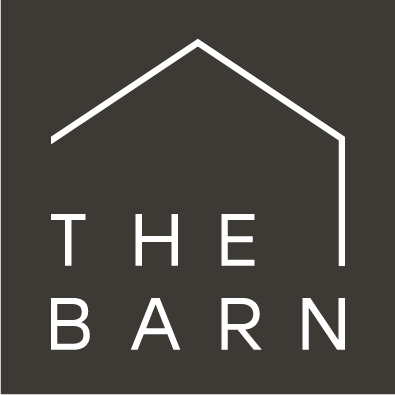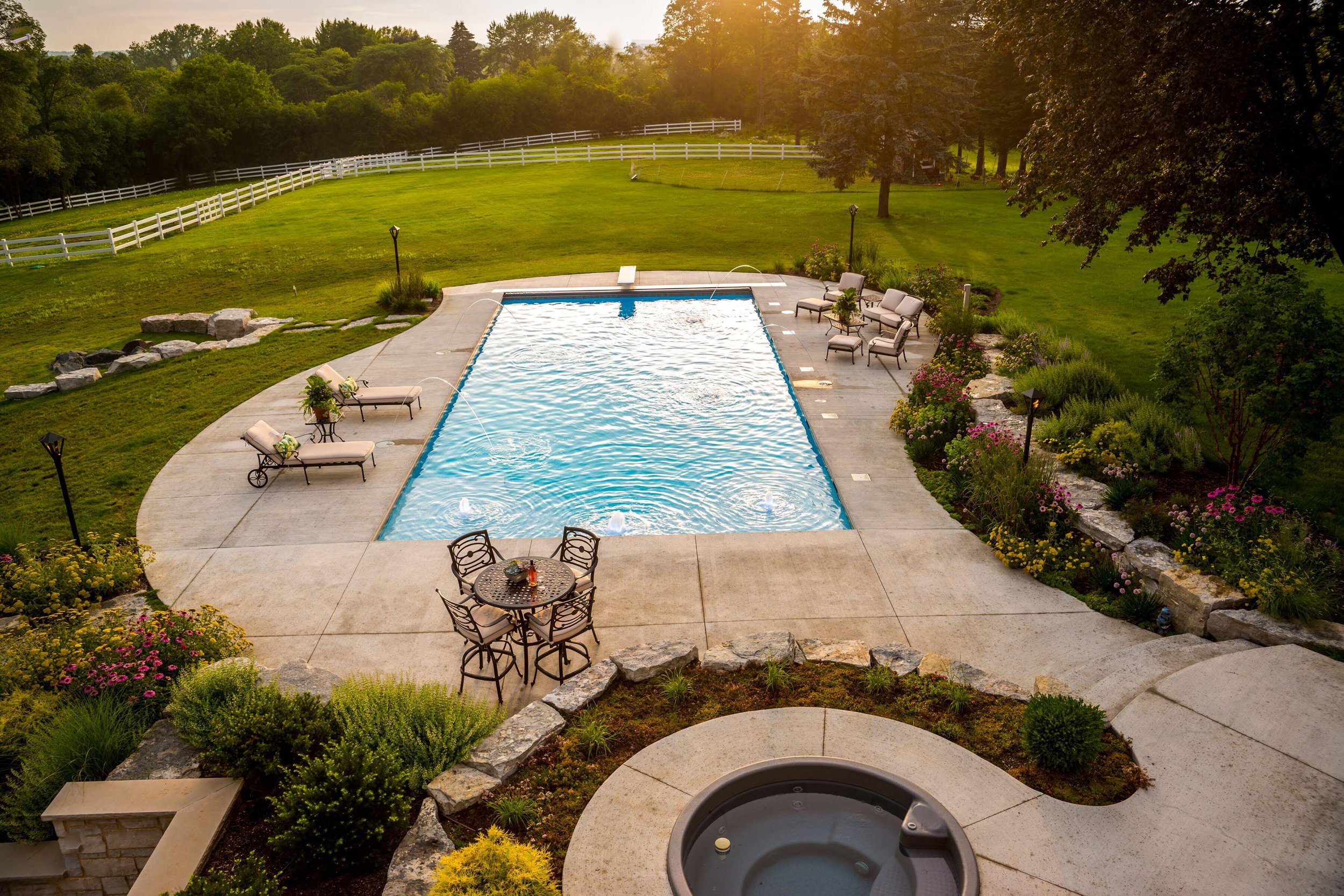What To Know Before You Start Designing Your In-Ground Custom Pool
You’ve wanted a pool for years, saved and planned accordingly, and are finally ready to pull the trigger. You’ve interviewed a couple of pool companies and are ready to start construction. Let’s go!
Not so fast…..
You might think the hardest decision was already made. Choosing to invest in an in-ground pool is the FIRST decision, but it won’t be the easiest. Get ready to make a lot more tough decisions when it comes to the design, amenities, materials and placement.
Material Choices of a Custom Pool
The size of the pool and the material choice is typically controlled by your budget, the total area you have to work with and any extra elements added to the pool design.
Pool Material Choices
There are three choices when it comes to pool materials: gunite, vinyl liner and fiberglass.
Gunite is very fine particle concrete and is reinforced with a rebar. It gets a nice plaster, aggregate or quartz finish, but it costs typically 30-40% more than a liner at initial installation. You should get 7-25 years depending on the finish before reapplying but the application is much more expensive than replacing a liner.
Most liner pools have fiberglass sides with concrete reinforced sides and concrete bottoms and then a vinyl liner custom fit to line it. The liners can last from 5 to 15 years, an automatic cover and proper chemical use can extend its life.
Fiberglass pools have come a long way, still the typically the cheapest installation but are the least customizable and have limitations on size.
Pool Design & Sizing Budget Tip: It’s usually more cost effective to go longer in a pool than wider. Here’s an example.
Consider this, a 18'x36' area is 650 sq. ft. Increasing the 4' width increases the total pool size to: 22'x36' (wider); for a new total of 792 sq. ft.
Instead, increase to 4' length 18'x40' (longer), for a total of 720 sqft. Not only is it less square footage but you are also primarily increasing the shallow end of the pool, requiring less excavating and materials.
How deep and what size should your new custom pool be?
If you want a spring diving board, know that achieving the bounce in a board requires a lot of space. Expect to need around 35’ of pool length to get the 12’ depth required for a spring board, with enough extra footage to get back to the shallow end. In calculating the slope from deep to shallow, follow a 1:3 ratio. When you include a minimal shallow area and sun ledge, you will need about 45 feet to accommodate a spring diving board.
Stationary boards and diving pools typically require around 9’ of depth which will require an additional 9-12’ of extra length in the shallow end.
Considering 90% of your time is spent in the shallow end, many clients are choosing to go with a “sport pool”. These typically range from 3.5’-5’ in depth. Although you cannot dive into these pools they can be tons for fun for sport games like volleyball and basketball. Sport pools also work well in smaller landscapes.
Sun ledges have become extremely popular! They are the ideal spot to put some lounge chairs and soak up the sun while keeping your feet cool in the pool. We recommend adding some bubble jets with lights for the relaxing sound of water and a unique water feature at night.
Bonus Tip: Add a sleeve in the sun deck for a sun umbrella. They can come in really handy on a hot day.
Custom Pool Placement Recommendations:
Once you have decided on these key factors we can start placing your pool and designing the entertaining space around it. The pool itself is usually the center of attention in a backyard but proximity to doors and views from inside can play a big factor in the pool placement. Sunlight is also important. Who wants a pool that is in the shade most of the day? Looking at the angles of the sun relative to nearby trees and often the house itself is very important. Those angles differ drastically from May-October but todays 3D modeling software can help make informed decisions.
Bonus Tip: We try to keep sun ledges facing south or west so they are facing the sun. They can be added to the side of the pool rather than the end to accomplish this if necessary.
Additional Pool Design Elements:
Now it’s time to think about what elements will add to your fun! Here are some of our favorite “extras” when it comes to pool design:
Waterfall hot tubs: These spillover hot tubs add a beautiful focal point to the pool and mimic that “vacation” feel in an outdoor living space.
Attached hot tub: With attached hot tubs, we usually present two options. If you think you will mostly use the hot tub seasonally, we like to put them near the main entertaining area. Or, if you plan to use it year round, place it as close to the home as possible for easy and fast access from inside.
Firepits and fireplaces come in handy when the nights are getting cooler but the pool is still open.
A cabana or pergola provides shade and an escape from the sun in the heat of the day. Adding ceiling fans will help keep away bugs and keep these “interior” spaces cool.
Landscape lighting and bistro lighting can be added to extend the entertainment into the evening hours.
A dedicated spot for the grill master in close proximity to the kitchen and the pool is key. Whether you are looking at a large bar and/or builtin outdoor kitchen or just a good spot for the weber grill, planning ahead can make a big difference in the usability of your space.
Adding a spot for a TV so you can still catch the big game but not miss out on pool time.
Pool Patio Design Tip: Large “hallways” around the pool are a waste of precious space. Simply “getting around” the pool is uninspired design, especially when you can use the space in so many other way. Instead, be thoughtful about maximizing entertaining and lounging spaces. Key elements to a well designed pool space include:
Keep sun chairs facing south
Properly sized dining space for the family or groups that are expected
Easy access to indoor spaces
Pool Patio Material Recommendations:
The materials you choose for the pool deck and patio space will impact the budget and design style. There are several materials to choose from: we typically use brick pavers, natural stone or porcelain. Porcelain is a great option to consider for your pool deck as it offers an array of benefits; including slip resistance and heat resistance. Additionally porcelain does not absorb pool chemicals meaning your investment can last longer. Another way to assist in the longevity of your pool deck is by laying your material of choice over concrete which ensures the pavers will not shift or move over time.
Most villages don’t require unsightly fences if you include an automatic cover so you don’t need to worry about closing off your backyard. Automatic covers allow for your pool to be closed off while you’re not using it, keeps leaves out of the pool, and preserves the temperature of your pool if it is heated. Without the need for unsightly fencing, our Landscape team recommends using trees, shrubs and evergreens to create beautiful and natural looking privacy and sound screening from streets and neighbors.
Think you've made all your decisions? One last considering..
What about chlorine vs salt pool treatment system?
This topic will take another entire blog post! Check back soon.
Ready to take the next step in your custom pool design process? Our Landscape Design team is here to help.





